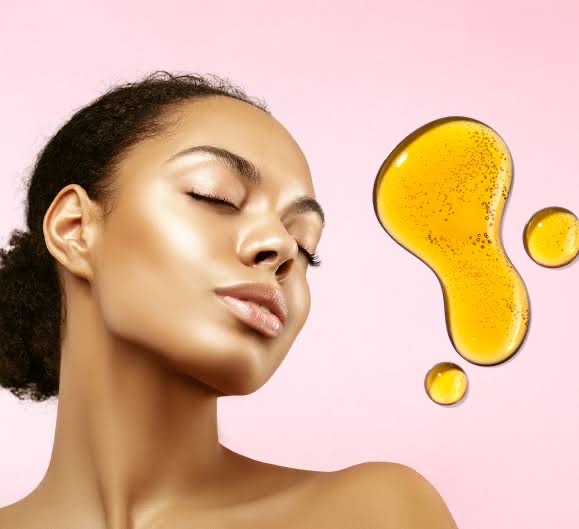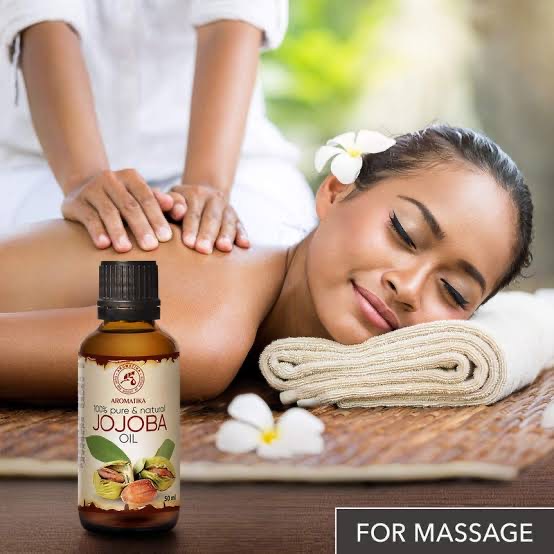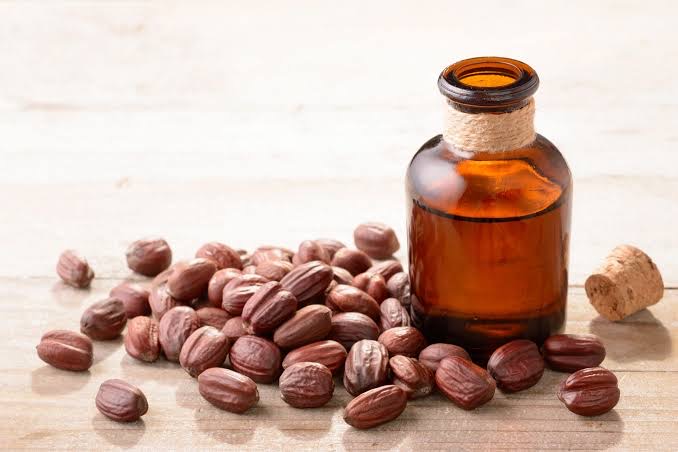Jojoba oil, often referred to as nature’s liquid gold, is a unique oil extracted from the seeds of the jojoba plant (Simmondsia chinensis), a shrub native to the arid regions of the southwestern United States and northern Mexico. Known for its exceptional stability and versatility, jojoba oil has become a staple in the beauty, health, and wellness industries. This article delves into the composition, benefits, and diverse applications of jojoba oil.
Composition and Properties
Unlike most vegetable oils, jojoba oil is not actually an oil but a liquid wax ester. This unique composition makes it remarkably stable, resistant to oxidation, and non-greasy. Chemically, jojoba oil closely resembles the sebum produced by human skin. Allowing it to blend seamlessly with the skin’s natural oils. It contains a rich array of fatty acids, including eicosenoic, erucic, and oleic acids. Along with vitamins E and B-complex, which contribute to its nourishing and protective properties.
Benefits for Skin and Hair
Skin Care

Jojoba oil’s resemblance to human sebum makes it an excellent moisturizer for all skin types. It provides a lightweight, non-comedogenic (won’t clog pores) barrier that helps to lock in moisture without causing breakouts. Its anti-inflammatory properties can soothe skin conditions such as eczema, psoriasis, and rosacea, while its antibacterial qualities help prevent acne.
The high vitamin E content in jojoba oil acts as an antioxidant, protecting the skin from environmental stressors and reducing the appearance of fine lines and wrinkles. Additionally, its gentle, hypoallergenic nature makes it suitable for sensitive skin and can aid in the healing of minor wounds and sunburns.
Hair Care

In hair care, jojoba oil serves as an effective conditioner and scalp treatment. It penetrates the hair shaft, moisturizing and strengthening hair from within. Which helps to reduce breakage and split ends. For the scalp, jojoba oil can help balance oil production, soothe dryness, and reduce dandruff, promoting a healthier environment for hair growth.
Applications in Beauty and Personal Care
Jojoba oil’s versatility and compatibility with the skin make it a popular ingredient in a wide range of beauty and personal care products:
– Moisturizers and Creams: the oil is a key ingredient in many facial and body moisturizers. Providing hydration and nourishment without leaving a greasy residue.
– Cleansers and Makeup Removers: Its gentle, non-irritating nature makes it an effective cleanser and makeup remover. Capable of dissolving impurities and makeup while maintaining the skin’s natural balance.
– Hair Conditioners and Treatments: It is commonly found in shampoos, conditioners, and hair masks, offering deep conditioning and scalp health benefits.
– Lip Balms and Salves: The hydrating and protective qualities of jojoba oil make it ideal for lip care products, keeping lips soft and supple.
Industrial and Medicinal Uses
Beyond its cosmetic applications, jojoba oil has found uses in various industrial and medicinal fields. It serves as a biodegradable lubricant in machinery, an ingredient in pharmaceuticals, and a carrier oil in aromatherapy. In the medical field, jojoba oil’s hypoallergenic and healing properties make it suitable for formulations in topical treatments and ointments.
Sustainability and Environmental Impact
The cultivation of jojoba plants is relatively sustainable, requiring minimal water and thriving in arid, marginal lands where few other crops can grow. Jojoba oil production is generally environmentally friendly, with minimal pesticide use and a low carbon footprint. Additionally, as a renewable resource, jojoba oil presents a more sustainable alternative to petrochemical-derived products and animal-based ingredients.

Jojoba oil’s unique composition and wide-ranging benefits have cemented its status as a valuable and versatile ingredient in the beauty, health, and wellness industries. Its ability to mimic the skin’s natural oils, coupled with its non-comedogenic, hypoallergenic, and antioxidant properties. Make it a go-to solution for skincare and haircare needs. As consumers continue to seek natural and sustainable products, jojoba oil’s prominence and applications are likely to expand, solidifying its role as nature’s liquid gold.

